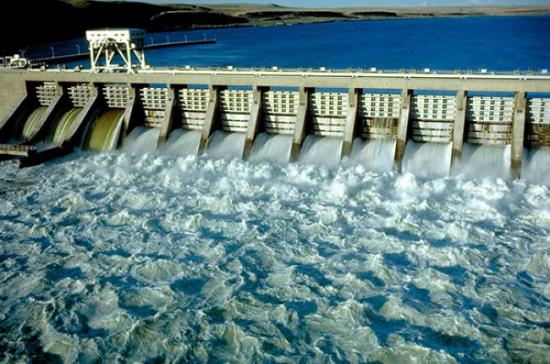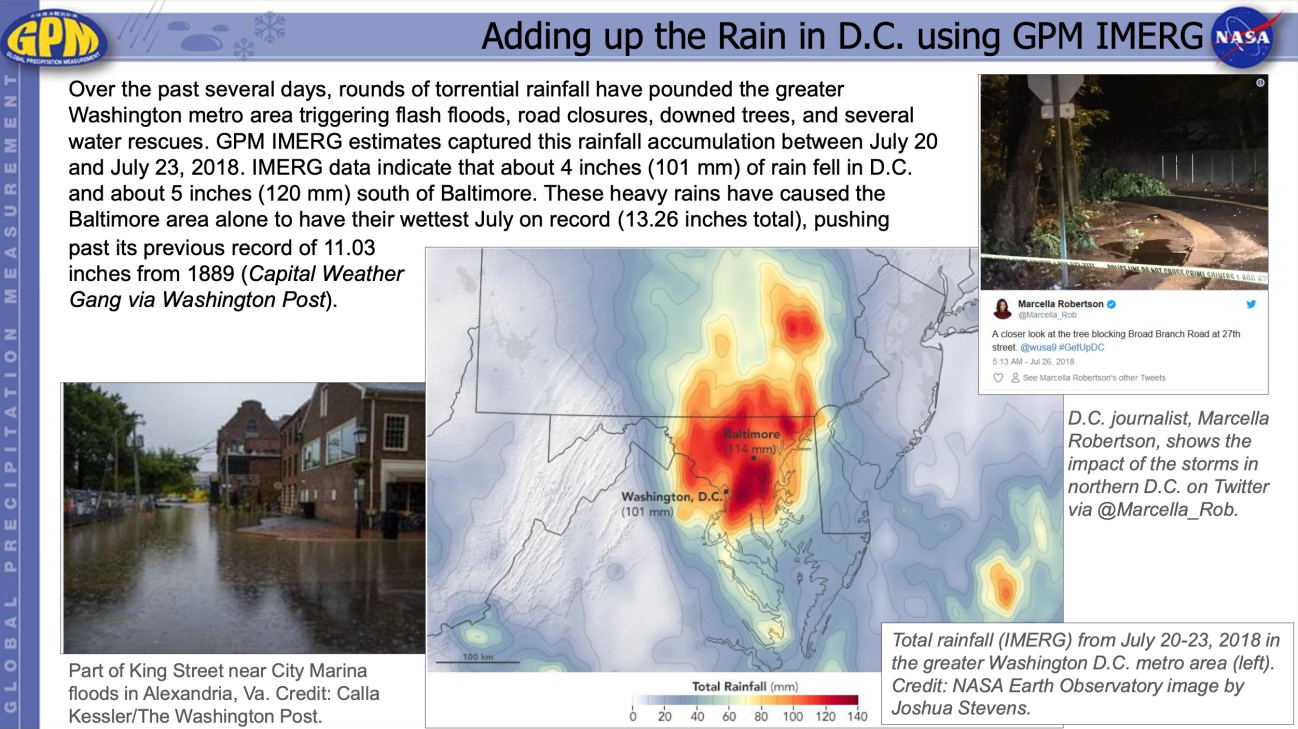
Using GPM Data for Energy Infrastructure and Management
In many areas, energy infrastructure assets, such as power plants and electric grids, can suffer damage or disruption in service due to a variety of climate-related impacts like extreme precipitation, high temperatures, drought, and rising sea levels. For example, warmer temperatures and little rainfall can cause changes in peak streamflow conditions that affect hydropower generation. Heavy precipitation events and flooding can impact a region’s energy infrastructure, including electric grid equipment, which has cascading effects on freshwater supplies and emergency services. The Energy Infrastructure and Management applications area promotes the use of GPM satellite precipitation data for key decisions or analyses within the energy sector. This includes the use of climatology data in the prediction of energy demand, development, harvesting, and production of non/renewable energy resources, and load forecasting.
Overview
In many areas, energy infrastructure assets, such as power plants and electric grids, can suffer damage or disruption in service due to a variety of climate-related impacts like extreme precipitation, high temperatures, drought, and rising sea levels. For example, warmer temperatures and little rainfall can cause changes in peak streamflow conditions that affect hydropower generation. Heavy precipitation events and flooding can impact a region’s energy infrastructure, including electric grid equipment, which has cascading effects on freshwater supplies and emergency services. The Energy Infrastructure and Management applications area promotes the use of GPM satellite precipitation data for key decisions or analyses within the energy sector. This includes the use of climatology data in the prediction of energy demand, development, harvesting, and production of non/renewable energy resources, and load forecasting.
GPM Data for Decision Making
Changes in climate and extreme weather events affects all cycles of the electric power industry, including grid operation and planning, power generation, and power consumption (load). Understanding local precipitation and climatological patterns can improve a region’s power efficiency, economy, and overall safety. Therefore, it is critically important to monitor severe weather, estimate heavy precipitation, and produce accurate climate estimates to identify, detect, and forecast the demand and supply of power for a region. GPM’s more frequent and more detailed coverage of precipitation across the globe can help improve weather forecasts, which in turn can help improve electric power load forecasting for the energy sector.
The availability of adequate water resources for hydropower facilities and thermo-electric power plants is a key challenge facing electric utilities and water resource managers. Other renewable energy technologies also can require considerable amount of water for operation, such as solar power and geothermal energy. Understanding all aspects of water availability from precipitation, surface water, groundwater, and snow packs, and water availability spanning multiple time horizons is critical to forecast supply and demand of operations as well as production development. GPM precipitation data provides key characteristics of rain such as intensity and location, which is an important element of this area; water resource planners and electric utilities must be able to plan for water shortages, manage risk accordingly, and identify areas for renewable energy production.




